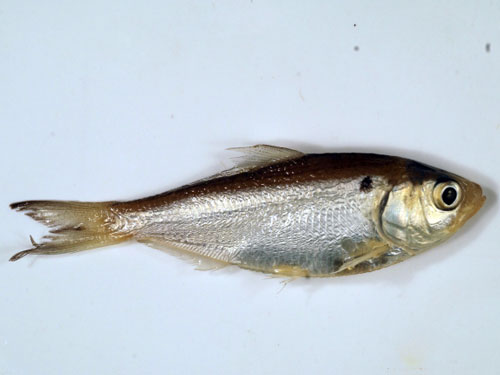The threadfin shad is a forage species found throughout much of North America. Adults rarely exceed 6 inches in length.
They are usually silvery blue above, fading to white on the sides and belly. Except the dorsal, their fins are yellowish in color. The chin and floor of the mouth is speckled with black pigment.
Threadfin shad are distinguished from gizzard shad by the fact that the upper jaw does not project beyond the lower jaw.
Threadfin shad are most commonly found in large rivers and reservoirs. They prefer waters with a noticeable current and are usually in the upper part of the water column. They are known to be temperature sensitive, with die-offs reported at temperatures below 45°F.
Threadfin shad naturally occur west of the Appalachian Mountains, north to Kentucky, west to East Texas, south to the Rio Grande drainage, and east to Florida.
Because of their value as a forage fish, the species has been introduced into lakes, reservoirs, rivers and other waterways outside of their native range.
Threadfin shad almost never bite on a hook but are easily caught using cast nets or seines. They are popular in many areas as live baits.
